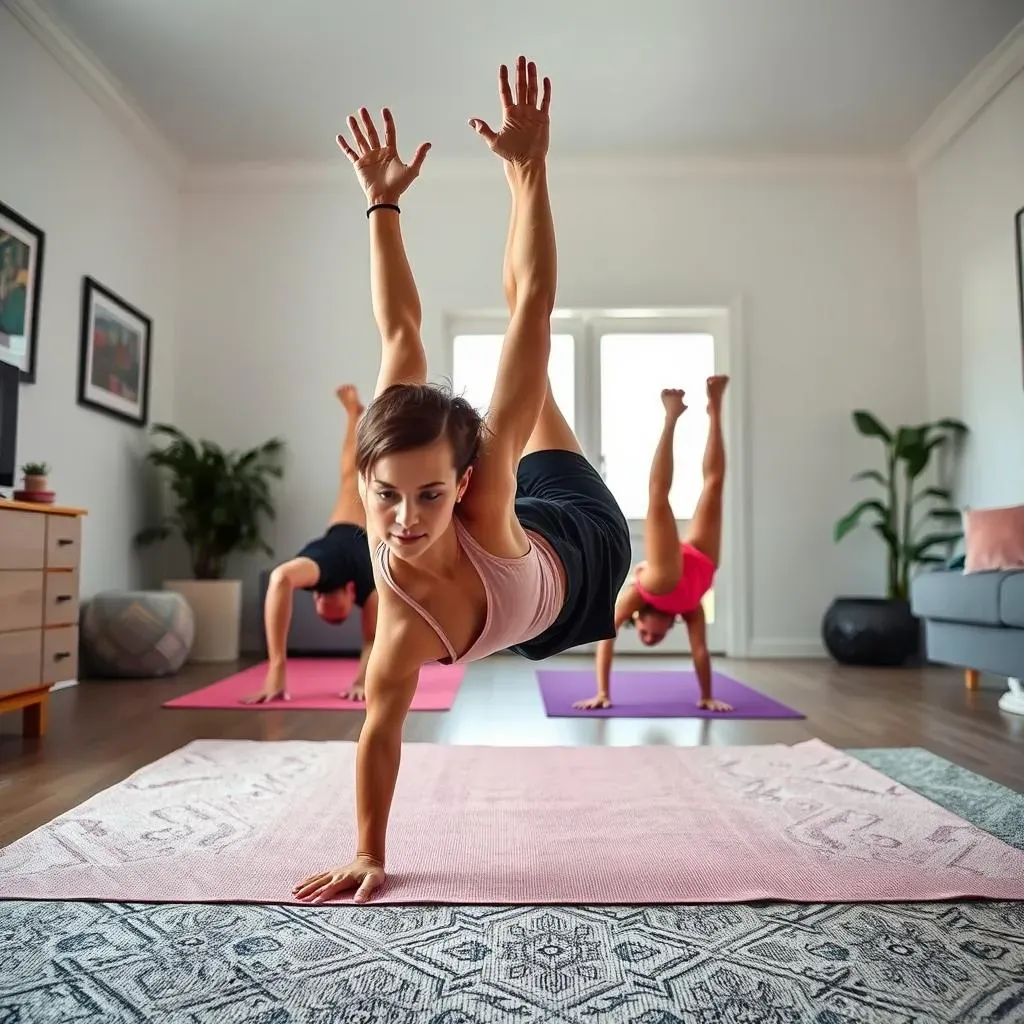Table of Contents
Let's be honest, planks can get a bit boring, right? You're stuck there, shaking, watching the clock tick by. If you're anything like me, you've probably wondered if there's a better way to build a strong core without all that plank-induced monotony. Well, good news! There is. This article is your guide to effective core workouts at home without planks. We're not just skipping planks; we're diving into a world of dynamic, engaging exercises that'll have your abs burning in the best way. Forget those static holds, we’re about to get moving! We will explore why planks aren't the only path to a strong core, then I'll show you a bunch of exercises you can do anywhere, anytime. Plus, I'll throw in some tips to help make sure you're getting the most out of every rep. So, ditch the plank and let's get started on this journey to a stronger core, all from the comfort of your home. Get ready to feel the burn and have some fun doing it!
Why Ditch the Plank? Exploring Core Alternatives

Why Ditch the Plank? Exploring Core Alternatives
The Plank's Not the Only Way
Okay, let's get real, planks are the go-to core exercise, right? Everyone and their grandma seems to be doing them. And yeah, they can be effective, but they're not the be-all and end-all of core work. Think of it like this: if you only ever ate broccoli, you'd get some nutrients, sure, but you'd be missing out on a whole lot of other good stuff. Your core is the same. It's made up of a bunch of different muscles, and just holding a plank isn't going to hit them all. Plus, let’s face it, planks can be a real drag. They’re static, they’re repetitive, and if you’re anything like me, you start watching the clock after about 10 seconds. We need more variety, more movement, more fun!
And that’s where exploring other core exercises comes in. There’s a whole world of dynamic movements that not only work your core muscles in different ways but also make your workout more engaging. By mixing it up, you’ll avoid plateaus, keep your muscles guessing, and, most importantly, stay motivated. It’s about working smarter, not just harder. We need to think about our core like a team, not just one muscle. And a good team needs a variety of drills and exercises to get the job done. So, let's ditch the plank for now and check out what else is out there to strengthen your core.
Reason to Ditch the Plank | Benefit of Alternatives |
|---|---|
Planks can be boring and repetitive. | Alternatives offer more engaging and dynamic movements. |
Planks don't hit all core muscles effectively. | Alternatives target different core muscles for balanced strength. |
Planks can be static and lack variety. | Alternatives prevent plateaus and keep workouts fresh. |
More Than Just Abs
When we think of core, most people immediately picture a six-pack, the rectus abdominis, but our core is much more than that. It includes muscles around your spine, obliques on the sides, and even deep muscles like the transverse abdominis. These muscles work together to stabilize your body, improve your posture, and generate power for movement. So, if all you’re doing are planks, you’re missing out on strengthening a large chunk of that core. Imagine trying to build a house with only one type of brick, it just wouldn’t work. We need different exercises to target each muscle group.
Switching to a variety of exercises will not only improve your core strength overall, but it will also make your body more functional. By engaging your core in different ways, you’re preparing it for real-life movements, not just holding a static position. Think about it, when was the last time you needed to hold a plank in your daily life? Probably never. But you do need a strong core when you’re lifting groceries, bending down to pick something up, or even just sitting at your desk. That's why it’s essential to train your core in ways that mimic these real-life actions. It's time to move away from the plank and embrace a more dynamic and functional approach to core strength.
Killer Core Exercises You Can Do at Home (No Planks Required)

Killer Core Exercises You Can Do at Home (No Planks Required)
The Mighty Mountain Climber
Alright, let's get into the good stuff: the exercises! First up, we've got mountain climbers. These aren't just a cardio move; they're fantastic for your core. Imagine you're sprinting, but you're doing it horizontally, bringing your knees into your chest one at a time. You’ll feel your abs working hard, plus your shoulders and legs get in on the action too. It's a full-body blast, and it gets your heart pumping, which is always a bonus. Start slow, get your form right, and then pick up the pace. Think of it as a moving plank, but way more fun.
The key is to keep your core tight and your back straight. Don’t let your hips sag down or stick up in the air. Keep your hands directly under your shoulders and try to drive your knees up as high as you can towards your chest. And remember, it's not a race, focus on controlled movements to make sure you're working the right muscles. If you're a beginner, start with shorter sets and take breaks as needed. You can gradually increase the duration and intensity as you get stronger. I like to imagine I'm climbing a very steep, very fast mountain, it helps me keep the pace.
Exercise | Why it Works | How to do it |
|---|---|---|
Mountain Climbers | Engages abs, obliques, shoulders, legs, and heart. | Start in plank, alternate bringing knees to chest, keep core tight. |
The Dynamic Dead Bug
Next, let’s talk about dead bugs. I know, the name is a bit weird, but trust me, this exercise is a core-strengthening powerhouse. Lie on your back, arms straight up towards the ceiling, and knees bent at 90 degrees. Now, slowly lower one arm behind your head while simultaneously extending the opposite leg out straight. The key here is to keep your lower back pressed into the floor, engaging your core to prevent any arching. It's a controlled movement, not a speed race. It’s all about precision and core engagement. Think of it as a slow-motion dance between your limbs.
This exercise is sneaky because it looks easy, but it really makes you focus on stabilizing your core. You'll be working your deep core muscles, which are the ones that really help with stability and posture. If you feel any strain in your lower back, stop and adjust your form. You might need to start with smaller movements and gradually increase your range of motion as you get stronger. I found it helpful to imagine I'm balancing a glass of water on my stomach, that way I keep my core tight.
The Rotating Russian Twist
Finally, let’s get into Russian twists. These are fantastic for hitting your obliques, those muscles on the sides of your core. Sit on the floor with your knees bent and your feet slightly off the ground. Lean back slightly, keeping your back straight, and then twist your torso from side to side. You can hold your hands together in front of you or for an extra challenge, hold a light weight. The key is to control the movement and really feel the twist in your obliques. It's like wringing out a towel, but with your core.
Make sure you’re not just swinging your arms, but you’re actually twisting from your torso. And keep your core engaged throughout the exercise to protect your lower back. Start with no weight and focus on your form, then you can gradually add a light dumbbell or medicine ball as you get stronger. I like to imagine I'm passing a heavy object from one side of my body to the other, it helps me to engage my obliques properly. These are just a few examples, there are many other dynamic exercises that can help you build a strong core without planks. The key is to find ones you enjoy and stick with them regularly.
Making it Stick: Tips for Effective AtHome Core Training

Making it Stick: Tips for Effective AtHome Core Training
Consistency is King
Okay, so you've got a bunch of awesome core exercises that don't involve planks, but how do you make sure you actually do them? The secret, my friend, is consistency. It’s not about doing a crazy workout once a month and calling it a day. It's about making core training a regular part of your routine, like brushing your teeth or drinking your morning coffee. Start small, maybe 10-15 minutes a few times a week. The key is to build a habit, not to burn out on day one. Think of it like planting a garden, you need to water it regularly to see the flowers grow.
And don't beat yourself up if you miss a day. Life happens. Just get right back on track the next day. The important thing is to keep showing up. I find it helpful to schedule my workouts like appointments so I don't forget about them. Also, finding a time that works best for you is key. Maybe it’s first thing in the morning, during your lunch break, or before you settle down for the night. Whatever you choose, make it a consistent time, and stick to it. Remember, small, consistent steps will get you further than big, infrequent leaps.
Tip | Why It Matters |
|---|---|
Start Small | Prevents burnout and builds a sustainable habit. |
Schedule Your Workouts | Makes core training a non-negotiable part of your routine. |
Don't Sweat Missed Days | Life happens, just get back on track as soon as you can. |
Listen to Your Body
Now, here's a big one: listen to your body. Your body is super smart, and it will tell you when it needs a break. If something hurts, don't push through it. Pain is a sign that something is not right, and it's better to stop and adjust your form or take a rest day. There's a difference between a muscle burn and actual pain, so learn to tell the difference. And remember, progress is not always linear, some days will feel easier than others, and that's perfectly normal. It's not a race to the finish line, it's a journey, so enjoy the ride.
Also, be sure to give your body the fuel it needs to recover and grow. That means eating a balanced diet with plenty of protein and getting enough sleep. And don't forget to hydrate. Water is key to keeping your muscles happy and healthy. Think of it like this: you wouldn't expect a car to run without gas, so don't expect your body to perform without the proper care. Listen to your body, take care of it, and you'll be amazed at what you can achieve. And remember, rest days are just as important as workout days!
